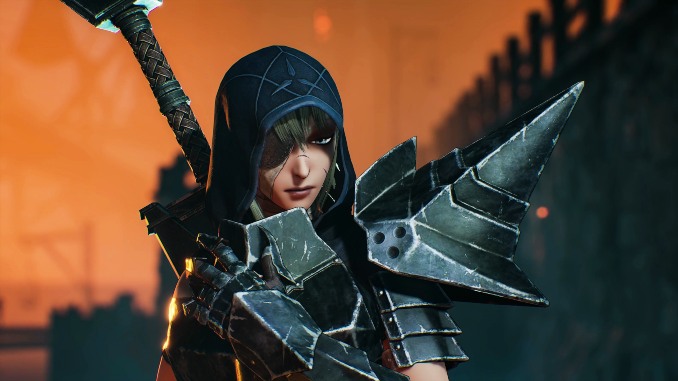Stylish Violence and Occasional Frustration Define Character Action Game Soulstice

Much has been made about the death of mid-sized games and the subsequent loss of experimentation, novelty, and specific genres from the gaming landscape. While it is true that many big publishers have become increasingly focused on mega-hit franchises above all else, resulting in certain styles of experience falling by the wayside, scores of AA studios have sprung up to fill some of these gaps. Reply Games Studios is one such developer whose latest, Soulstice, embodies many strengths offered by this scale of game.
While its title may make you assume it’s another soulslike, Soulstice actually has the trappings of a character-action game, a style that is relatively underexplored these days outside of Capcom and PlatinumGames’ output. A laundry list of elements makes Soulstice’s debt to titles like Devil May Cry and Bayonetta clear: a persistent score in the top right corner that grades your performance, fights that take place in small inescapable combat areas, being framed by a zoomed-out third-person camera angle, the importance of uppercutting and juggling foes, an arsenal of weapons which can be switched mid-combo, destroying furniture to produce red orbs that can be used for upgrades, and, well you get the idea.
As a genre, character-action games sell the illusion of complete mastery. Even if you don’t know every combo, you are cast as a conductor of balletic violence, guiding the hero through high-octane fights that look ripped straight from an anime MV. Above all else, that pulsing sense of style defines what has been described as “spectacle fighters.” Soulstice’s novel mechanics, solid execution of the fundamentals, and gratifying power-up state help it tap into some of the adrenaline perfected by what came before. But unfortunately, it isn’t all gorgeous action choreography. An erratic camera and questionable enemy compositions can sometimes make this feel less like a beautifully filmed single-take martial arts sequence and more like an inelegant shaky cam production.
Soulstice follows Briar and Lute, a pair of sisters who have been bound to a single body by a mysterious religious organization called the Order. They are dispatched to the sacred city of Ilden to investigate a potential Tear, a rift in reality, only to find it already open and the nearby population massacred. From here, they must fight their way through myriad horrors and seal the Tear before all humanity is destroyed.
While stretches of the narrative can feel like a long-winded trek toward a forever-distant McGuffin, interesting complications eventually arise from our protagonist’s backstories. Briar, whose pointed armor, injured right eye, and hulking metal sword give her more than a passing resemblance to the protagonist of Berserk, is predictably gruff, while her sister Lute, a blue spirit tethered to her elder sibling’s body, is more openly empathetic and naïve. Although the duo initially comes across as somewhat one-note, they eventually gain nuance as their pasts and the world’s political realities come into focus. Briar is tormented by guilt over her sister’s lost body, but as Lute explores her sibling’s memories, it surfaces narrative threads about recovering from past trauma and confronting exploitative power structures. Unfortunately, while these elements of the story eventually click into place, it takes a little bit too long to get there, and these turns are undermined by a sequel-bait ending that robs the conclusion of catharsis.
But when it comes to character-action games, success is largely defined by how well the experience expresses style through game mechanics. Here Soulstice occasionally soars by providing some novelties that separate it from its peers. For one, there is a heavy focus on constantly switching between your many weapons to deal with enemies, as each tool is particularly effective against certain kinds of foes. For example, you’re encouraged to use bulky gauntlets to shred through heavily armored monsters, equip a bow to down flying wraiths, and switch to a whip to slice through mobs of lesser ghouls. There is also an Ikaruga-inspired polarity system where Lute can project a red or blue field to make enemies of the corresponding color vulnerable.